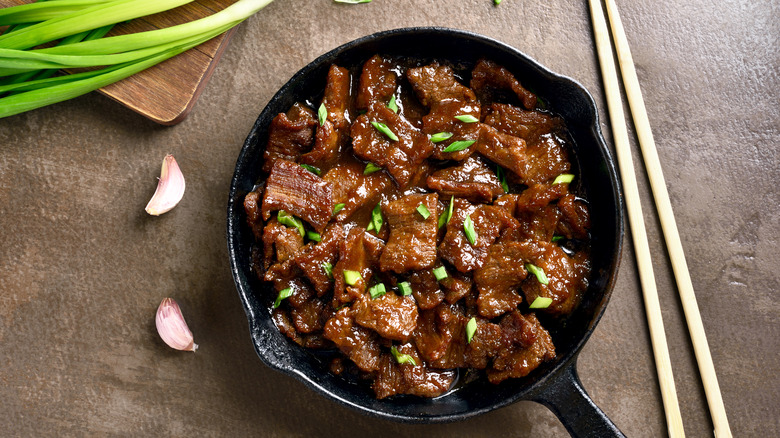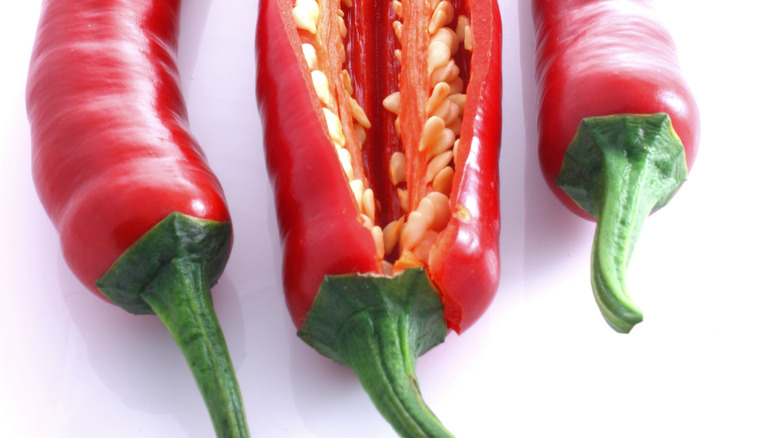To Control The Heat Of Mongolian Beef, Split Your Chiles
Spicy, sweet and salty, Mongolian beef made with tender flank steak is a stellar stir fry dish that has it all. A yummy combination of juicy strips of beef and fresh scallions wok-fried in a sauce made of soy, brown sugar, and fresh chiles, this umami-packed classic is an absolute stunner. However, while the chiles lend the sauce heaps of flavor, they can also make the mouth burn, the brow sweat, and the tongue tingle. Luckily, you can control the heat of your Mongolian beef by splitting your chiles down the middle (leaving the stem intact) before adding them to your wok with your aromatics, instead of chopping them into thin slices.
Chili peppers contain a compound called capsaicin that creates that characteristic burning sensation on the tongue. Concentrated in the membrane (those white pithy bits in the hollow of the chili surrounded by the seeds), this compound also triggers a rise in body temperature, which is why it can induce sweating, a runny nose, and even hiccups. Splitting the chiles without cutting through the stem makes it much easier to remove them from the wok after you've finished stir frying your dish. This eliminates the risk of the sauce soaking up more heat from the chiles as it sits. Simply grab them by the stalk and fish them out when you're ready to eat to benefit from their flavor without the feverish fire.
Splitting the chiles contains the capsaicin
Unlike slicing or chopping the chiles finely, splitting them means the capsaicin is more likely to stay contained within the body of the pepper, hampering it from spreading out and intensifying the heat in the sauce. The result? A warming, tingly flavor rather than an impassioned burn that overwhelms the senses.
To tame your Mongolian beef even further, you could deseed the chiles by splitting them all the way through the middle (including the stem this time), and scraping off the membrane, seeds, and ribs with a paring knife before tossing them into your wok. Another option is to keep them whole and pierce them with a fork. These small pin pricks allow the natural oils from the membrane and seeds inside the chili to seep out and infuse the sauce without overpowering the dish, resulting in a mellower taste.
Don't have fresh chiles on hand? Dried chili flakes, used in this recipe for Easy Slow Cooker Mongolian Beef, are an awesome alternative. The advantage of using dried flakes is that you can control how spicy your dish is; add a small sprinkle for a mild flavor or go heavier for a spicier kick. However, bear in mind that dried peppers tend to be hotter than fresh varieties because while the water has evaporated from them, the level of capsaicin is concentrated.

